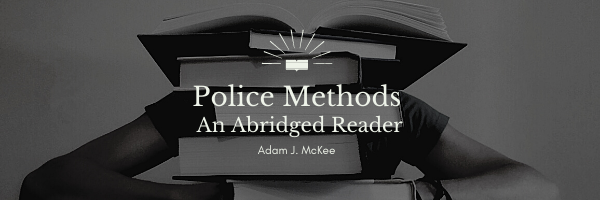Table of Contents
Section 1: Patrol Operations
- Section 1.1: The Rise and Fall of Traditional Patrol
- Section 1.2: Purposes of Patrol
- Section 1.3: Civilianization
- Section 1.4: Recruitment
- Section 1.5: Intelligence-Led Policing
Section 2: Community Policing
- Section 2.1: Why We Need C.O.P.
- Section 2.2: Elements of Community Policing
- Section 2.3: Government Partnerships
- Section 2.4: Changing Police Organizations
- Section 2.5: CompStat and COP
Section 3: Community Dynamics
- Section 3.1: What is a Community?
- Section 3.2: Perceptions of the Police
- Section 3.3: Police and Crime
- Section 3.4: Fear of Crime
- Section 3.5: Building Partnerships
Section 4: C.O.P. Strategies
- Section 4.1: Crime Science
- Section 4.2: C.P.T.E.D.
- Section 4.3: Crackdowns
- Section 4.4: Hot Products
- Section 4.5: Policing the Mentally Ill
Section 5: Community Problems
- Section 5.1: Problem-oriented Policing
- Section 5.2: COP and Crime Prevention
- Section 5.3: Community Crime Prevention
- Section 5.4: Assessment and Response
- Section 5.5: Order Maintenance v. Civil Rights
Section 6: Policing a Multicultural Society
- Section 6.1: Police Communications
- Section 6.2: COP in Schools
- Section 6.3: Dealing with Bullying & Racism
- Section 6.4: Language, Race, & Cultural Barriers
- Section 6.5: Prescriptions for Change
Modification History File Created: 08/10/2019 Last Modified: 09/22/2023
[Next]
This work is licensed under an Open Educational Resource-Quality Master Source (OER-QMS) License.

Hi Adam,
My name is Oscar, I teach at a community college and I am completely working on making the policing course a full OER course. I just want to let you know that some of these chapters are very important and will be using it for my course
Thanks for letting me know you plan to use them! I’ll be doing a lot of work on lecture notes, quizzes, etc. in the near future. Let me know if I can help you with any of that kind of thing.